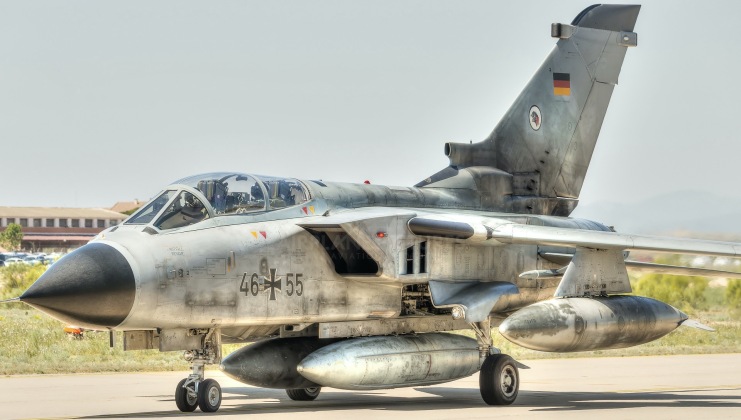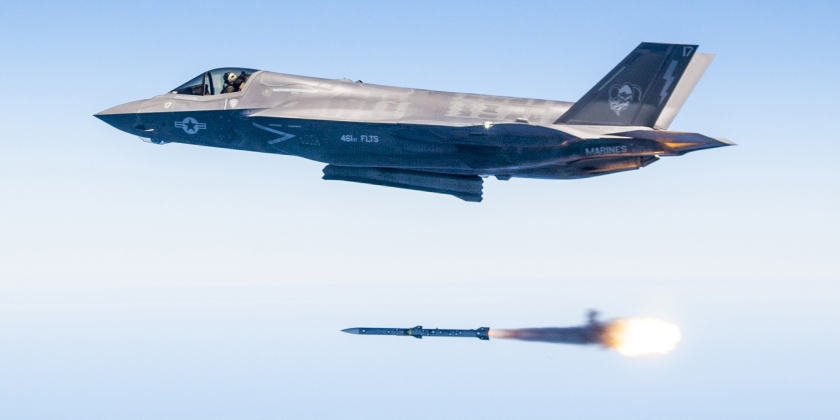On March 14 it was announced that the F-35 had been selected to serve as the next fighter for the German Air Force, after a years long process to select a successor for part of the ageing fleet of Tornado jets tasked with delivering nuclear strikes. While Germany initially sought to replace all its Tornadoes with domestically built Eurofighter fourth generation jets, the aircraft’s inability to operate in electronic attack suppression or nuclear strike roles as the Tornado had led it to consider acquiring American F-18E/F Super Hornets and their electronic warfare variant the E/A-18G Growler. The age of the Super Hornet, its similar acquisition cost to the more sophisticated F-35, and the F-35’s expected ability to incorporate upgrades for many more years into the future, are thought to have been major factors influencing the decision. This marks the latest of multiple major contracts which the F-35 has gained in recent years consistently defeating the F-18E/F and competing European designs such as the Eurofighter.

What is perhaps most notable about Germany’s decision to acquire the F-35 is that under the preceding administration of Chancellor Angela Merkel calls to acquire the troubled American stealth jet were very strongly opposed. Indeed, less than four years before F-35 acquisition plans were announced the head of the German Air Force Lt. Gen. Karl Mullner was forced to resign due to his strong support for an F-35 acquisition. “The Luftwaffe considers the F-35’s capability as the benchmark for the selection process for the Tornado replacement, and I think I have expressed myself clearly enough as to what the favourite of the air force is,” he had stated. A primary reason for rejecting the American fighter, which was widely seen as far most cost effective than European aircraft, was pressure from local industry to support the Eurofighter program. The F-35 is one of just two fifth-generation fighters in serial production and fielded at squadron level strength anywhere in the world, alongside the Chinese J-20, and although currently not considered ready for medium intensity combat and seeing its capabilities is very harshly criticised by defence officials, it is expected to have a much greater potential than any other Western fighter as upgrades to the aircraft are set to continue to be made for several decades. The first two German F-35 squadrons are expected to be operational by 2030.

With German Eurofighters unable to use nuclear weapons, the F-35 is expected to have a niche nuclear delivery role in the German fleet as the F-18E/F was which is a key mission for the country’s air force. Although Germany does not itself field nuclear weapons, NATO has worked around restrictions on nuclear proliferation through nuclear sharing agreements under which non-nuclear states field aircraft capable of delivering nuclear warheads, train to use them, and have American warheads stored in their countries. This allows the United States to immediately transfer nuclear warheads to its allies in the event of a major war, which would effectively make Germany and many other non-nuclear states across Europe into nuclear weapons states overnight. The F-35 is the only active Western stealth fighter capable of delivering nuclear weapons, deploying B61-12 nuclear gravity bombs as their primary nuclear armament, although Russia’s still very small fleet of Su-57 fifth generation fighters also have this capability.

The German Defence Ministry stated regarding plans to acquire the F-35: “The decision on the Tornado successor has been made: With the F-35 aircraft type, the task of nuclear sharing will be guaranteed in the future. The goal is to replace the Tornado by 2030.” Defence Minister Christine Lambrecht added that: “The F-35 offers unique potential for cooperation with our NATO allies and other partners in Europe.” It is expected that the country will acquire the F-35A variant, which is by far the least costly and was designed for use by the U.S. Air Force. The F-35 will notably not be tasked with electronic attack missions as the E/A-18G was initially intended to be, with the German Air Force set to acquire 15 specially configured new Eurofighters for this mission. A lack of experience in the field makes their ability to compete with either the E/A-18G or the F-35 in electronic warfare highly questionable without American support.
